Perhaps the highlight of tutoring math at a local middle school was the day I chaperoned the 6th graders on their field trip to the Austin Nature & Science Center and Zilker Park.
One of the special ed teachers and I had a dirty dozen of students to keep track of while we toured ANSC. We sat on some logs, listened to our guide, who solicited a list from the students, of living (biotic) and nonliving (abiotic) things that made up the surrounding ecology.
Then, she gave every student a net and asked them to capture some biotic things. Students loosely paired up, swinging those nets more wildly than the native fauna warranted. The guide incorporated some big finds into a jar. At the conclusion of the netting activity, students released whatever they had captured and returned their nets. Our guide talked about the animals, mostly insects and spiders, contained in the jar.
In between activities, we waited near a relaxing pool of water that had a waterfall. How wonderful it was to witness students’ attention captured by nature rather than an electronic device.
We then entered a circular room, sat on a carpet and discussed the difference between a food chain and a food web. We reviewed the ultimate source of energy, which is the sun. Producers, such as plants, capture solar energy and consumers obtain energy through eating producers and/or other consumers.
The first consumers introduced were Madagascar hissing cockroaches, which some adventurous students petted. I opted to feel my own fingernails since they were made from the same keratin as cockroach exoskeletons.
Next, a frog, who was stereotypically jumpy, was passed around while remaining confined in his cage.
The turtle appeared comfortable enough to stay out of his shell as students touched it.
The quail remained caged although I would’ve loved watching its attempt to fly to freedom.
The last time I saw crawfish they were served up on a plate. At this point, I could’ve embedded myself into the food web.
As soon as the ferret was taken out of its cage, I smelled its signature musk.
This beautiful milk snake had a protective pillowcase that matched its rich burgundy color. Talk about fashionable accessories!
After reviewing what eats what in the food web, we entered the nature hike area. I loved how these 6th graders looked so at home in nature, which seemed to have a calming effect on them.
Imagine stopping to literally smell flowers rather than check an electronic device.
At one point, we visited an aquatic habitat and some students captured tadpoles.
One student caught this dragonfly larvae.
Most, however, simply mucked around the perimeter.
For the second half of the field trip, we ate lunch at Zilker Park.
Many of the trees had kites stuck in them from the kite day celebration the day before.
Many students played soccer–or at least ran around kicking a soccer ball.
Others amused themselves jumping around on the rocky outcropping.
A few tried their hand at sand volleyball.
As much as we all enjoyed the outing, it’s a shame field trips such as these are rarities.

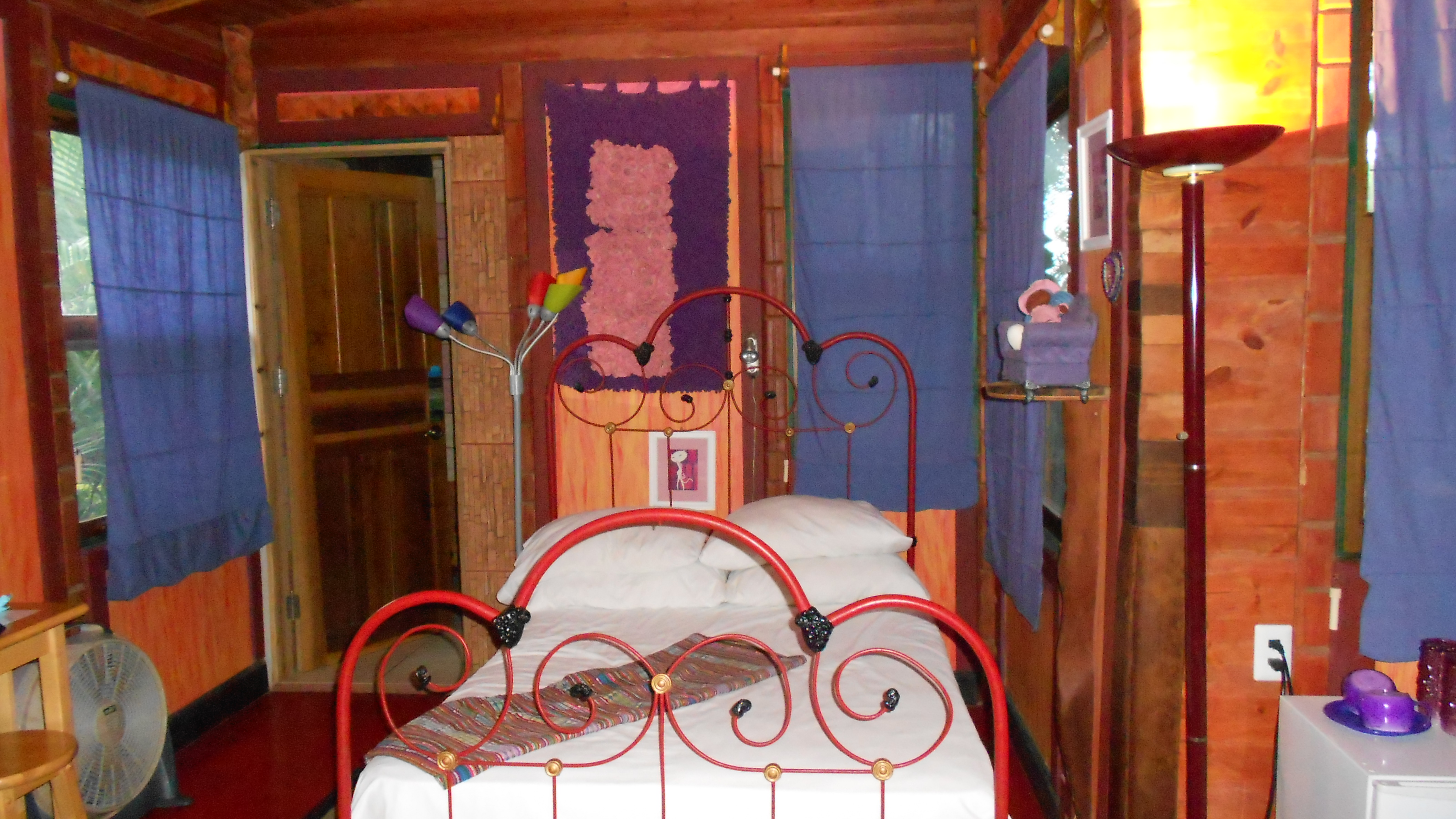
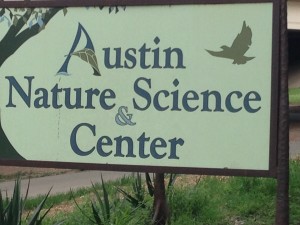
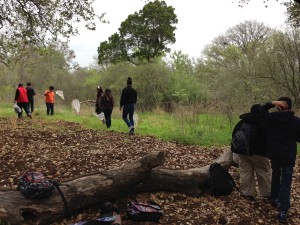
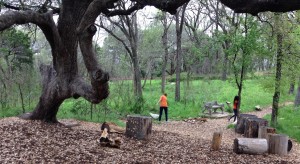
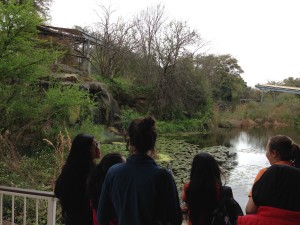
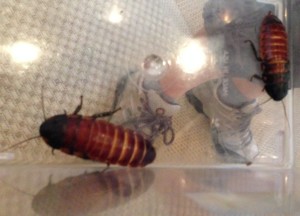
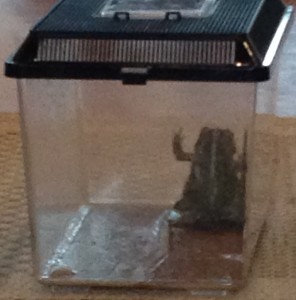
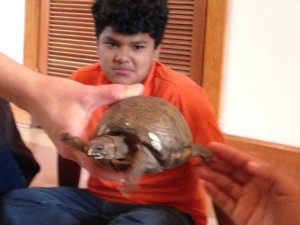
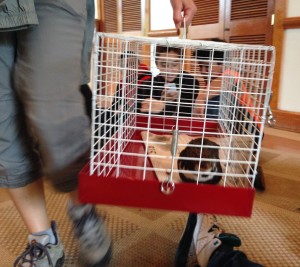
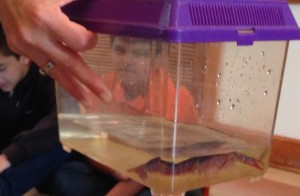
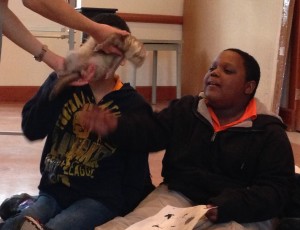
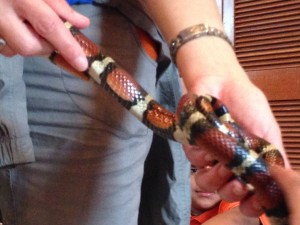
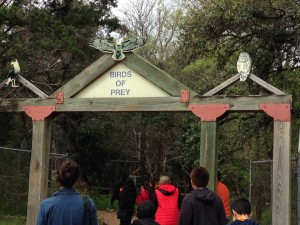
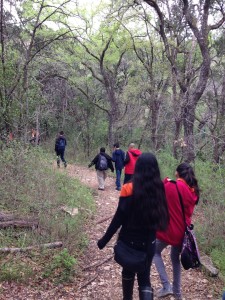
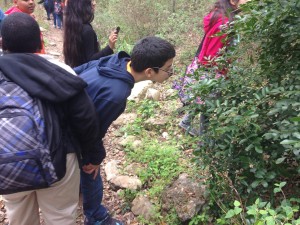
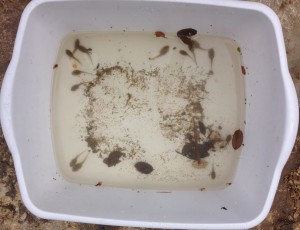
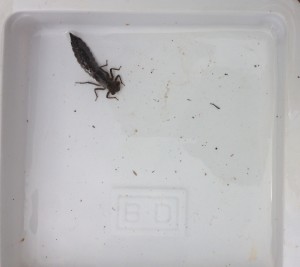
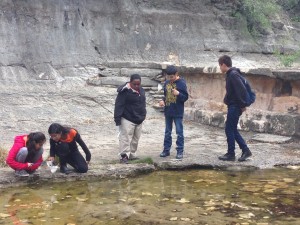
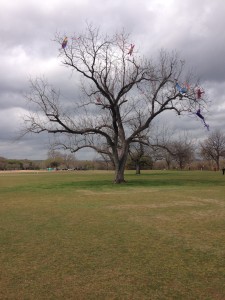
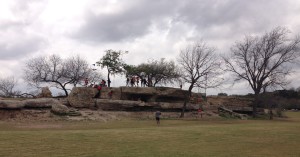
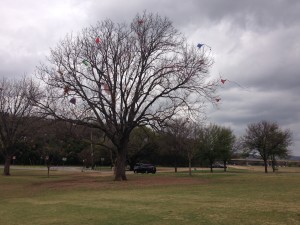
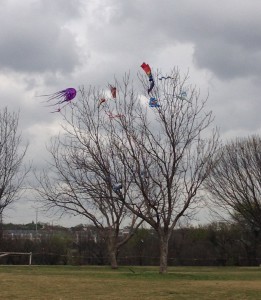
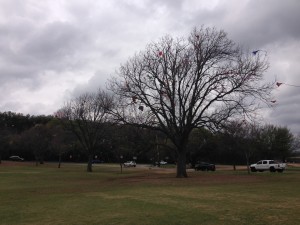
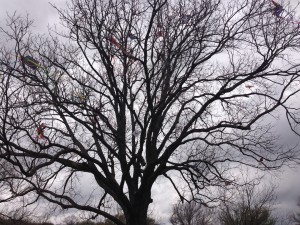
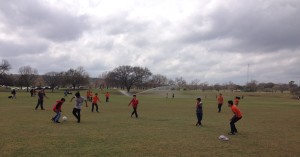
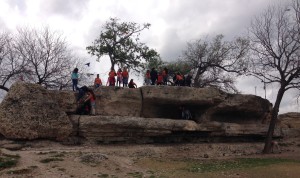
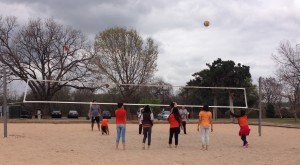
One Response to Middle School Field Trip